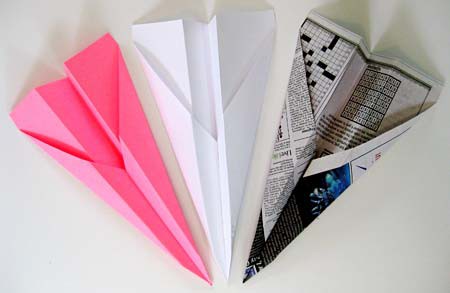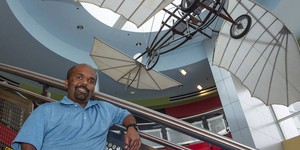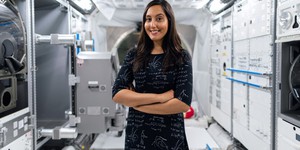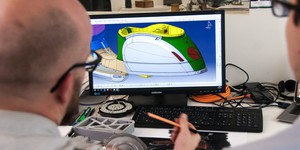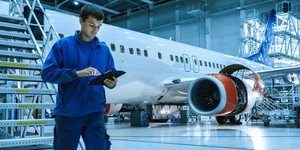Summary
Introduction
Have you ever wondered what makes a paper plane fly? Some paper planes clearly fly better than others. But why is this? One factor is the kind of design used to build the plane. In this activity, you will get to build a paper plane and change its basic design to see how this affects its flight. There is a lot of cool science in this activity, such as how forces act on a plane so it can fly, so get ready to start folding!Materials
- Sheet of paper, standard 8 ½ inch by 11 inch size
- Ruler
- Scissors
- Large open area in which to fly a paper plane, such as a long hallway, school gym, baseball field, or basketball court. If you are flying your paper plane outside, try to do it when there is not any wind.
- Something to make at least a one foot line with, such as a long string, another ruler, masking tape, rocks, or sticks.
Instructions
- Fold carefully and make your folds as sharp as possible, such as by running a thumbnail along each fold to crease it.
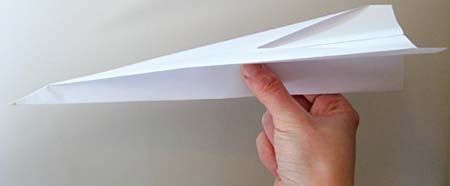 Image Credit: Teisha Rowland, Science Buddies / Science Buddies
Image Credit: Teisha Rowland, Science Buddies / Science Buddies
- Go to a large area to fly your paper plane. Make sure that there is no foot or car traffic at the area. A long hallway or your school gym is a good location. If you are flying your plane outside, like in a baseball field or on a basketball court, do your experiment on a day when there is no wind.
- Use a string, a ruler, masking tape, rocks, or sticks, to make a line in front of you that is at least 30 centimeters (cm) (or one foot) long, going from left to right. This will be the starting line from which you will fly the paper plane.
- Place your toe on the line you prepared and practice throwing your paper air plane a couple of times.
- Once you have finished practicing, it is time to start the experiment. Place your toe on the starting line you prepared earlier and then throw your paper air plane. Observe where it lands.How far does it fly?
- Throw the plane at least four more times. Each time before you throw the plane, make sure it is still in good condition (that the folds and points are still sharp). When you throw it, place your toe on the line and try to throw the plane as similarly as possible, including holding it at the same spot.Did it go about the same distance each time? Why or why not?
- Once you have a good idea of about how far your plane typically flies, change the plane to increase how much drag it experiences. To do this, cut four slits that are each roughly 2.5 cm long along the back edge of the wings. One in the center of each wing, and one where each wing meets the central fold. This will result in four tabs (two on each wing). Fold two of the tabs up 90 degrees, and two of the tabs down 90 degrees.
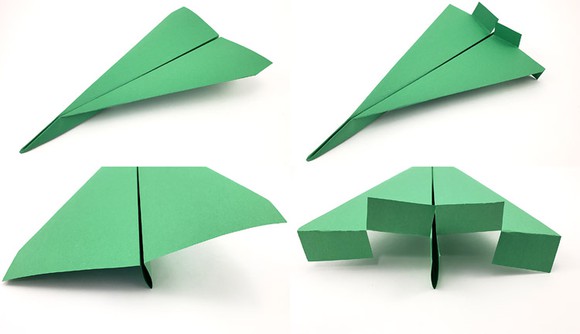 Image Credit: Ben Finio, Science Buddies / Science Buddies
Image Credit: Ben Finio, Science Buddies / Science Buddies
- Throw your modified paper plane at least five times, just as you did before.How far does the paper plane fly now compared to before? Why do you think this is, and how does it have to do with drag?
What Happened?
As a paper plane moves through the air, the air pushes against the plane, slowing it down. This force is called drag. To think about drag, imagine you are in a moving car and you put your hand out the window. The force of the air pushing your hand back as you move forward is drag, also sometimes called air resistance. In this activity, you increased how much drag acted upon the paper plane by making a one inch-high vertical strip on both wings. For example, this is what happens when you are in a moving car with your hand out the window and change your hand from being horizontal to being vertical. When your hand is held out vertically, it catches a greater amount of air and experiences a greater amount of drag than when your hand is horizontal. You could probably feel this, as your hand would be more forcefully pushed back as the car moves forward. This is what happened to the modified plane — it experienced a greater amount of drag, which pushed it back more than the original plane. Altering how just one force acts upon a paper plane can clearly change how well that plane flies.Digging Deeper
Paper airplanes are fun and easy to make. Just fold a piece of paper into a simple plane and send it soaring into the sky with a flick of your wrist. Watching it float and glide in the air gives you a very satisfying and happy feeling.
But what allows the paper plane to glide through the air? And why does a paper plane finally land? To find out, we will talk about the science behind flying a paper plane and the different forces that get a paper plane to fly and land. These same forces apply to real airplanes, too. A force is something that pushes or pulls on something else. When you throw a paper plane in the air, you are giving the plane a push to move forward. That push is a type of force called thrust. While the plane is flying forward, air is moving over and under the wings and is providing a force called lift to the plane. If the paper plane has enough thrust and the wings are properly designed, the plane will have a nice long flight.
But there is more than lack of thrust and poor wing design that gets a paper plane to come back to Earth. As a paper plane moves through the air, the air pushes against the plane, slowing it down. This force is called drag. To think about drag, imagine you are in a moving car and you put your hand outside of the window. The force of the air pushing your hand back as you move forward is drag. Finally, the weight of the paper plane affects its flight and brings it to a landing. Weight is the force of Earth's gravity acting on the paper plane. Figure 1 below shows how all four of these forces, thrust, lift, drag, and weight, act upon a paper plane.
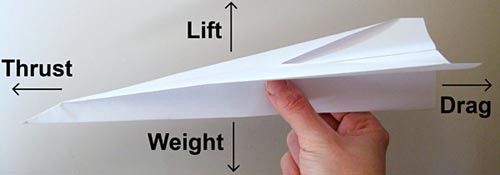 Image Credit: Teisha Rowland, Science Buddies / Science Buddies
Image Credit: Teisha Rowland, Science Buddies / Science BuddiesA paper airplane in flight will experience an initial thrust forward which begins its flight and lift from air which will help push it upward. These forces are counteracted by drag that acts in the opposite direction as thrust and gravity which will constantly pull the plane towards the ground.
Figure 1. When a paper plane is flying, the four forces of thrust, lift, drag, and weight are acting upon the plane, affecting how well its journey through the air goes.
Well, what do you think? Would you like to start experimenting with these forces? In this activity, you increase how much drag a paper plane experiences and see if this changes how far the plane flies. How will adding drag affect your plane's flight? You can answer this question with just a flick of your wrist.
Ask an Expert
For Further Exploration
- Make paper planes that are different sizes and compare how well they fly. Do bigger planes fly further?
- Try making paper planes out of different types of paper, such as printer paper, construction paper, and newspaper. Use the same design for each. Does one type of paper seem to work best for making paper planes? Does one type work the worst?
- Some people like to add paperclips to their paper planes to make them fly better. Try adding a paperclip (or multiple paperclips) to different places on your paper plane (such as the front, back, middle, or wings) and then flying it. How does this affect the plane's flight? Does adding paperclips somewhere make the paper plane's flight better, or much worse?
Related Resources
Project Ideas
Links
- Blog Post: Girls at After-school Program Science Event Explore Paper Airplanes
- Blog Post: New Paper Plane Record
- Blog Post: The Results are In: Plotting Numerical Ranges


